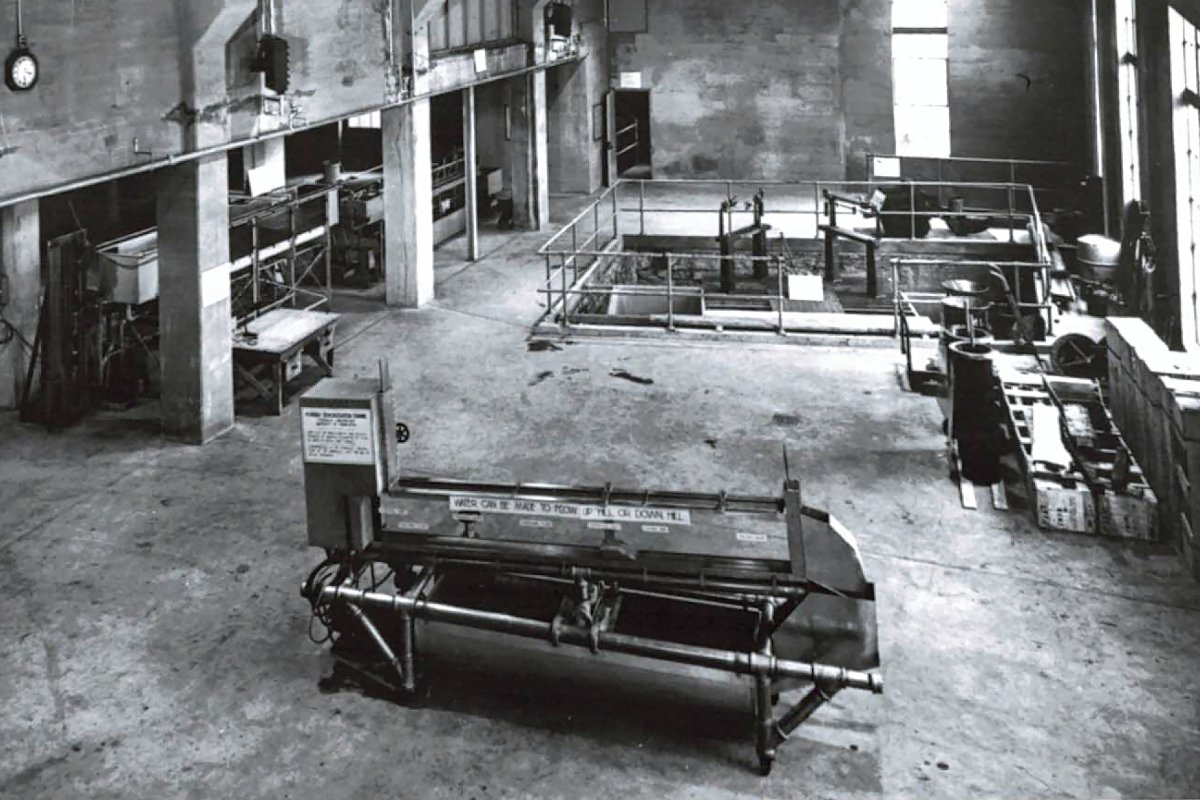The flume that started it all

A—Up to 300 cubic feet per second of water from the Mississippi River is diverted through the lab for studies involving sediment transport, hydraulic modeling, and marine hydrokinetic research.
B—The main channel is six feet deep and nine feet wide.
C—The current motorized, data collection carriage was built in-house. It is capable of repeated sub-millimeter resolution topographic scans.
D—Once the water exits the channel, it is routed back to the Mississippi below St. Anthony Falls. Sediment-settling basins here remove materials added during experiments.
E—An entire fourth floor and wind tunnel was added in the 1980s as lab research evolved to also include the flow of air.
Above: This portable flume was built in the 1930s by The late Lorenz Straub, an associate professor of hydraulics at the University of Minnesota. It’s still used to teach visitors and students fluid mechanics concepts. (See an historical image of it in the story.)
How one man's vision weathered the years
November 9, 2018
Two years after he arrived at the University of Minnesota, associate professor of hydraulics Lorenz Straub published an article about the importance of using physical models and experiments to analyze water flow when designing structures to manage it.
In that four-pager for the Minnesota Techno-Log, Straub told readers how to tackle scaling issues between models and prototypes, arguing in favor of engineers learning the “laws of similitude” as part of their professional training.
In 1936, four years following this article, Straub began directing the construction of the St. Anthony Falls Hydraulic Laboratory—now the St. Anthony Falls Laboratory—on Hennepin Island in downtown Minneapolis. He established a long-lasting and adaptable floor space for hydraulic modeling.
But why stop at designing an innovative building?
Straub had a hand in all the equipment that went into it as well. The main channel, a 275-foot-long flume spanning the length of the lab’s first floor, is his creation (original blueprint above). Another Mississippi River supply channel is located one floor up. It routes water to various small- and large-scale experimental flumes and basins within the building.

“There are, of course, numerous other applications of the principle of similarity,” Straub wrote in his article. “The success of the isolated experiments performed under the direction of capable investigators points definitely to the remarkable possibilities of this method of design.”
With that, Straub heralded the future.
The lab, celebrating its 80th anniversary this year, has diversified beyond river hydraulics. Visitors on the free public tours will find all manner of studies showing an interdisciplinary approach to fluid mechanics, including delta restoration, wind energy, and even the flying patterns of fruit flies.
For lab tours, visit events.umn.edu; search “SAFL.”
